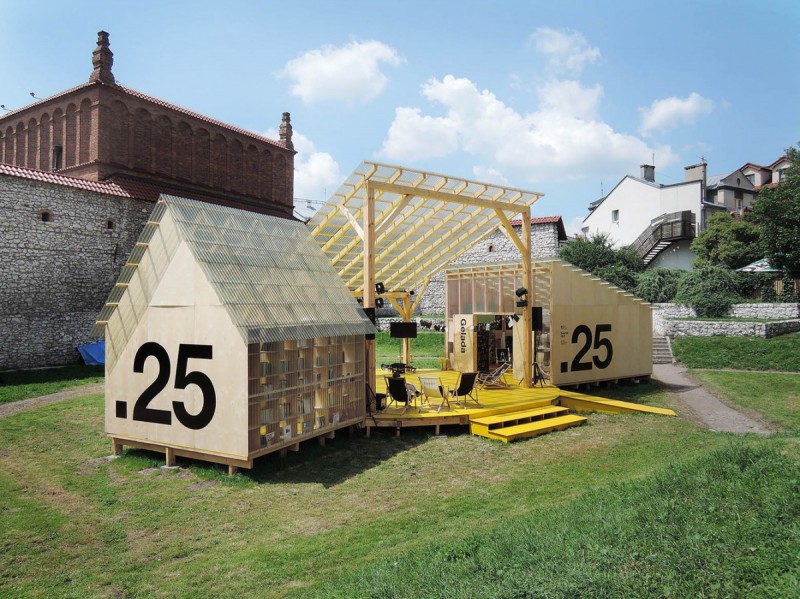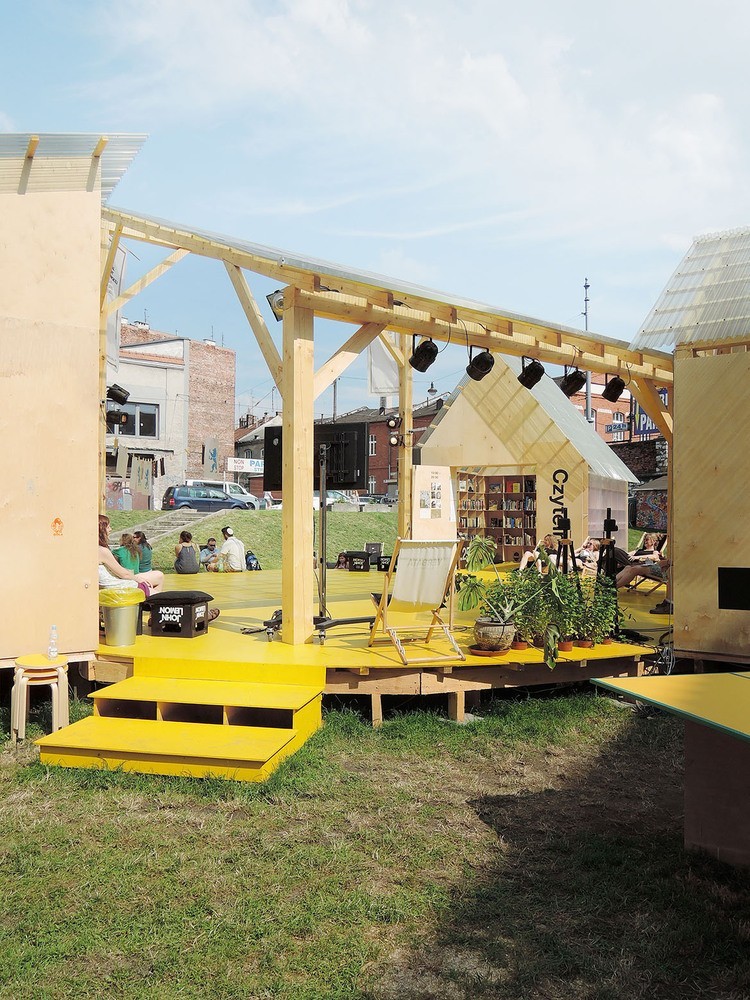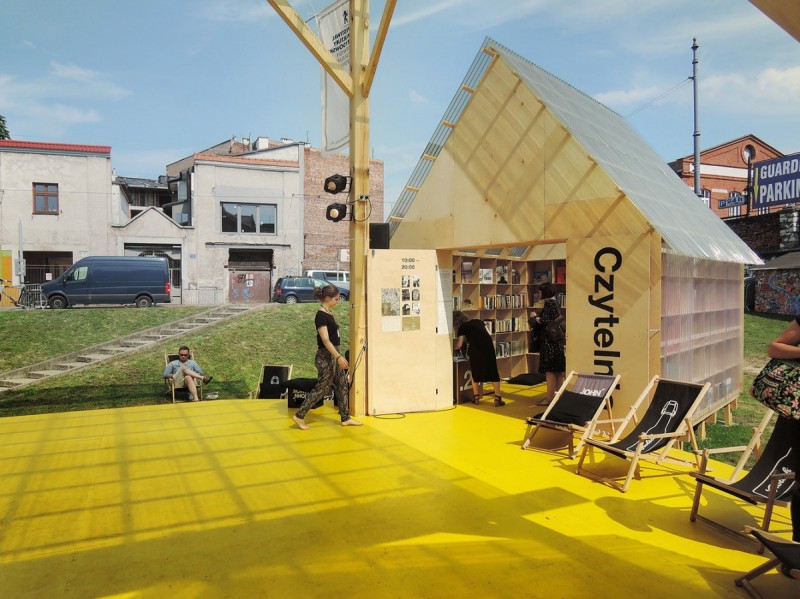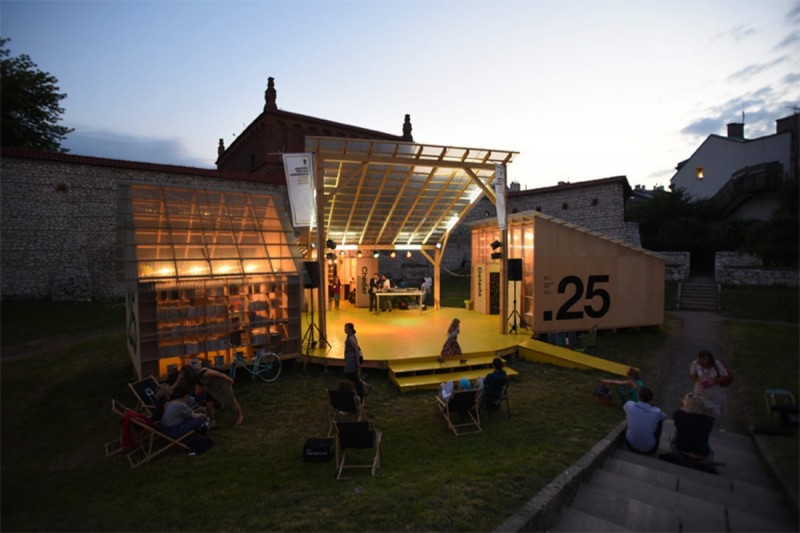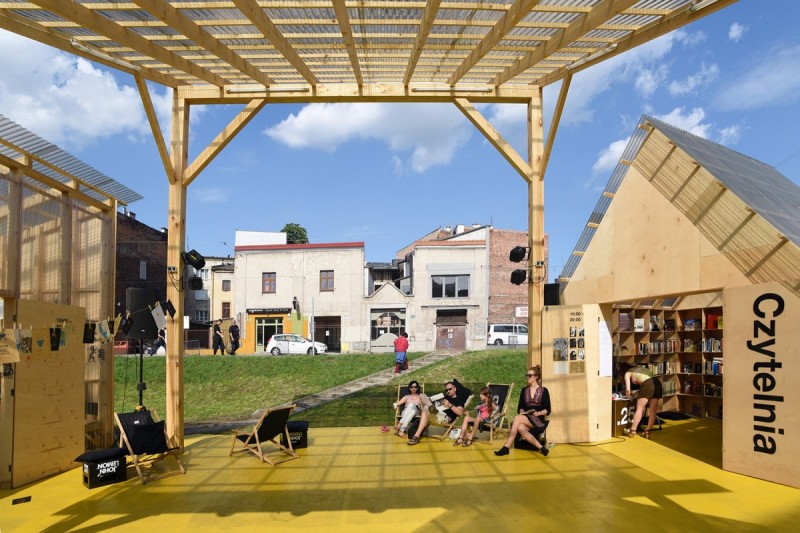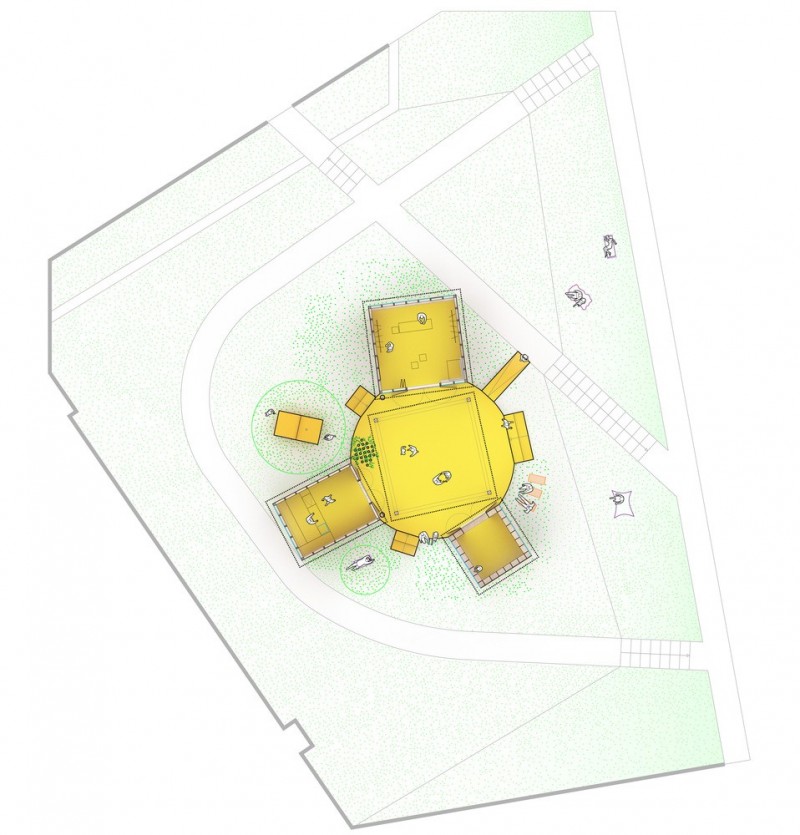Location: Kraków, Poland
From the architect. This year’s anniversary 25th Jewish Culture Festival in Cracow celebrates Kazimierz – Jewish quarter of Cracow, as well as other Jewish districts from around the world. Following the theme, BudCud designed a temporary public space in one of a few empty squares in the district. Noticing the fact that the squares of Kazimierz are its most characteristic features, unfortunately all occupied by cars, monuments or commercial activities, with the festival architects decided to create the FKŻ Quarter – an architectural device for bringing social life to the site. It is a temporary public urban situation created by multiple objects organised around a central elevated square.\\\\\\\\\\\\\\\\r\\\\\\\\\\\\\\\\nThe FKŻ Quarter is located on the back of the Old Synagogue, at Dajwor Street, where no one goes, but bus drivers park tourist buses along the street. The site – green lawn with a natural slope – is a secret garden, waiting to be brought to life. With a temporary program the location was made public and used by local community and tourists.\\\\\\\\\\\\\\\\r\\\\\\\\\\\\\\\\nThe FKŻ Quarter depicts architecture hidden in local circumstances with its vernacular roofscape, frames for social engagement and spontaneous behaviour, linking the commercial and the gratuitous. BudCud introduced a petite urban situation, where different volumes surround the central platform, that can become a stage, dance floor, classroom or a cafe. Three staircases – benches, a ramp and a table tennis zone complement three houses, operating as a social library, Cheder cafe and Gelada graphic studio from Tel Aviv, where screen print workshops are held.\\\\\\\\\\\\\\\\r\\\\\\\\\\\\\\\\n\\\\\\\\\\\\\\\\r\\\\\\\\\\\\\\\\nAll the structure is made of wooden beams and thick plywood plates. The houses are finished with natural plywood and transparent corrugated plastic plates, balancing the bright colour of yellow floor. Transparent walls and roofs provide nat- ural light inside, but also manifest the functions of singular volumes, which during night concerts become eye-catching urban lighthouses and expressive scenography. \\\\\\\\\\\\\\\\r\\\\\\\\\\\\\\\\nThe FKŻ Quarter renders a possibility of social engagement by providing an architectural frame in forgotten public square. The design becomes a tool of living better in the city, challenging the possibilities of using the space.\\\\\\\\\\\\\\\\r\\\\\\\\\\\\\\\\n


